POSTER STAMPS AND POSTCARDS OF THE BUGRA -- LEIPZIG, 1914
Internationale Ausstellung für Buchgewerbe und Graphik
|
Introduction
The poster stamps
The Königliche Akademie für Graphische Künste und Buchgewerbe New York Times article about the Bugra
|
There were many more poster stamps issued for the Bugra than just the two main sets for the entire expo. Some of the special sections issued their own, as did Austria for its participation. And there were stamps issued by dealers and other individual participants. The largest number were issued by the special section called "Der Frau" - "The woman." Those are displayed on a page of their own. |
|
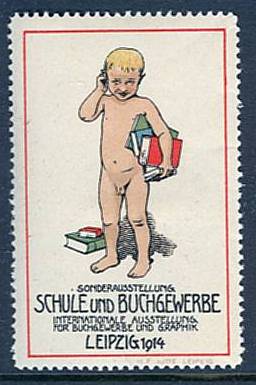
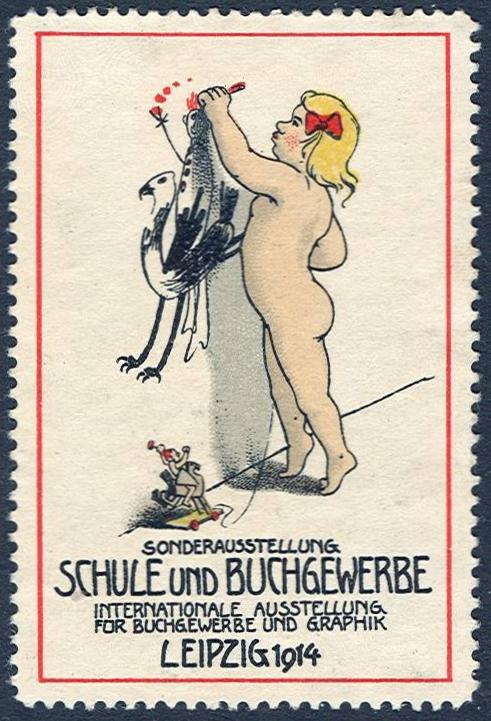
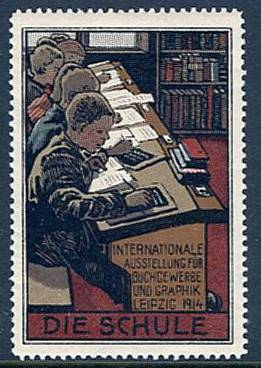
|
SONDERAUSSTELLUNG: "DAS KIND UND DIE SCHULE" SPECIAL EXHIBITION: THE CHILD AND THE SCHOOL An entire building was devoted to this theme, its structure that of the ideal German schoolhouse. Note that the middle stamp at left shows a child drawing a parody of the central image from the Exhibition poster - the Prometheus on a gryphon, and there is yet another version of the Prometheus figure in the form of a pull-toy on the floor. |
|
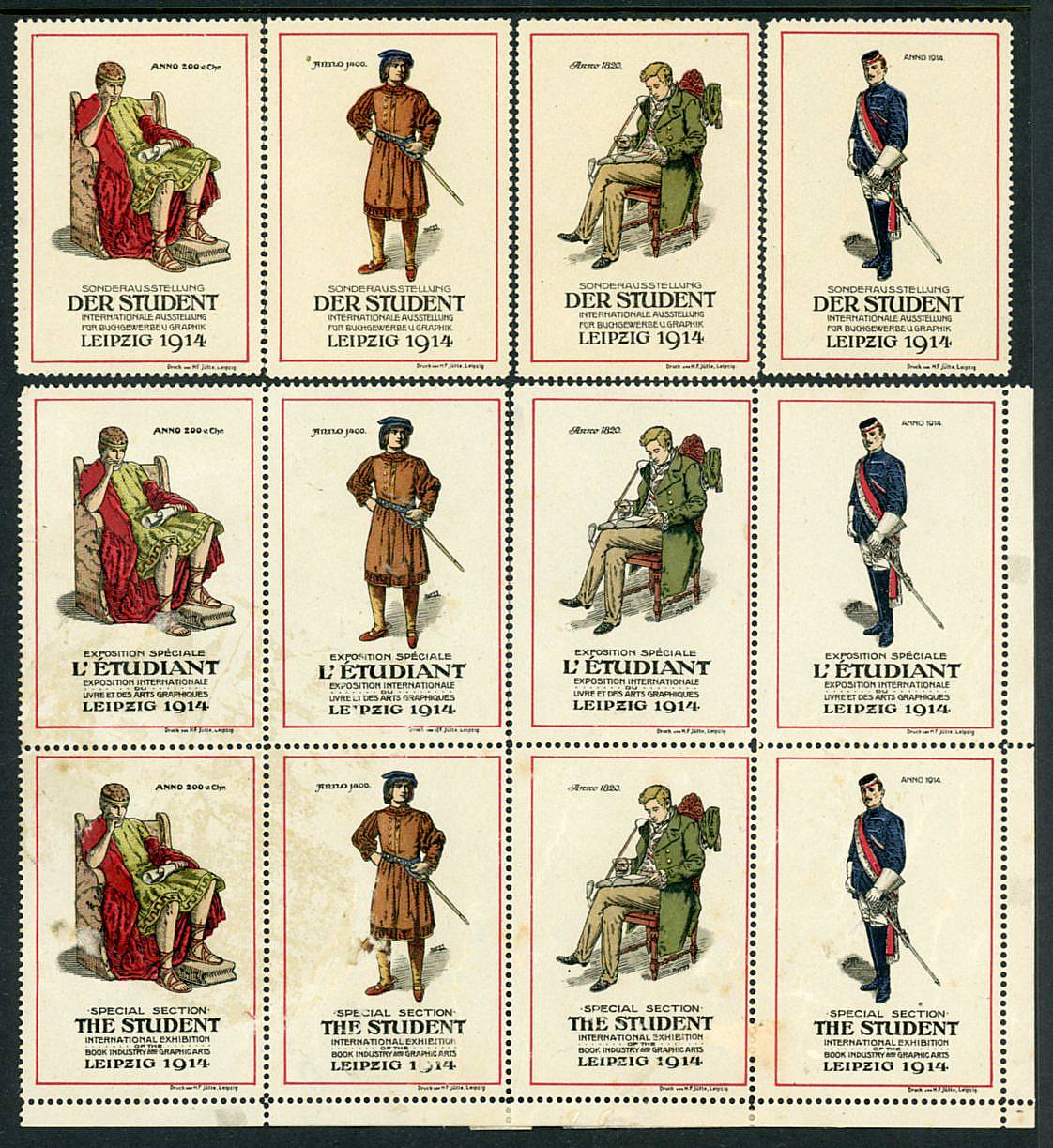
|
SONDERAUSSTELLUNG "DER STUDENT" SPECIAL EXHIBITION: THE STUDENT An entire "Academic Quarter" was constructed to accommodate the exhibits of student-related material. The poster stamps for this section were printed in three languages - German, French, and English. There are four designs, each showing how a college student of a different period of history might have dressed. |
|
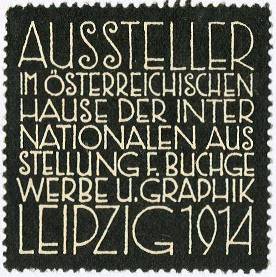
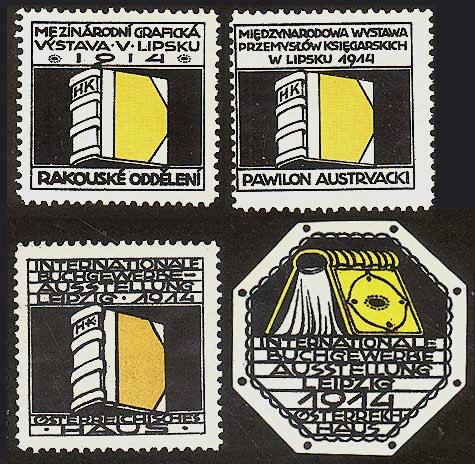
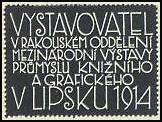
|
AUSTRIA HOUSE
The Austrian pavilion issued these six stamps. The three small square ones are in German, Czech, and Polish. It seems to me there should be one in Hungarian as well, since that was the second largest population of Austria-Hungary. And there were at least ten other languages spoken there as well. |
|
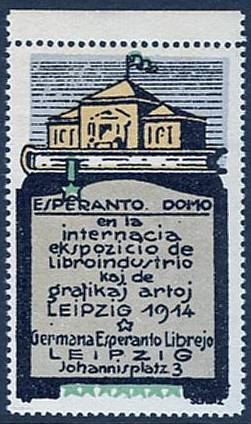
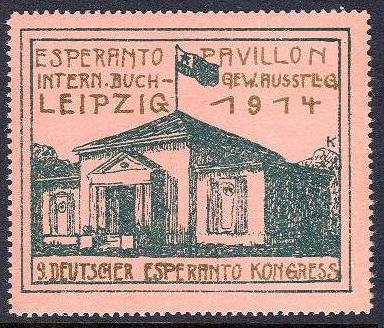
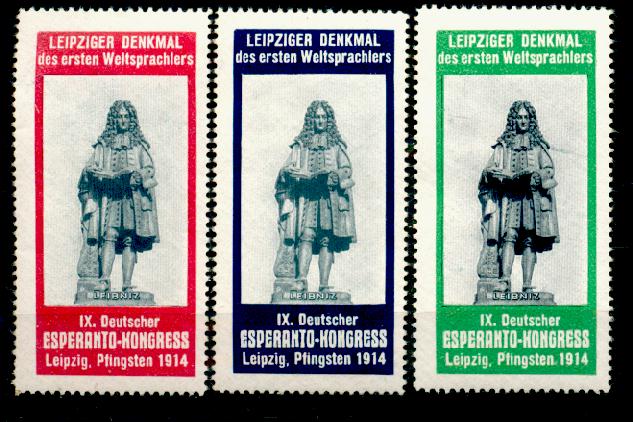
|
ESPERANTO PAVILION
Esperanto was at the height of its popularity in 1914, and its supporters even managed to fund their own Pavilion. Tom Minor's catalogue in the Journal of the Poster Stamp Collectors Club describes the Esperanto Pavilion set (middle stamp at left) as having ten colors - Green & Gold ink on paper tinted white, citron, yellow, light pink, yellow-green, grey-green, grey, blue-green, brown, and violet. I have tried to sort all the examples I have found by color, and come up with at least 13 paper colors, though a few could be changelings from light or age, and I'm dubious about that grey, so you decide - composite image HERE. |
|
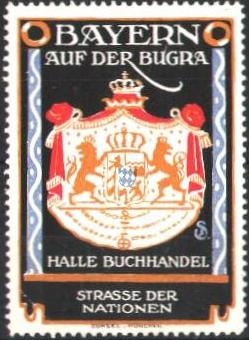
|
BAYERN (BAVARIA)
The provinces of Germany had separate representation in various exhibit areas. Bavaria produced this stamp to advertise its participation in the Book Trade pavilion. |
|
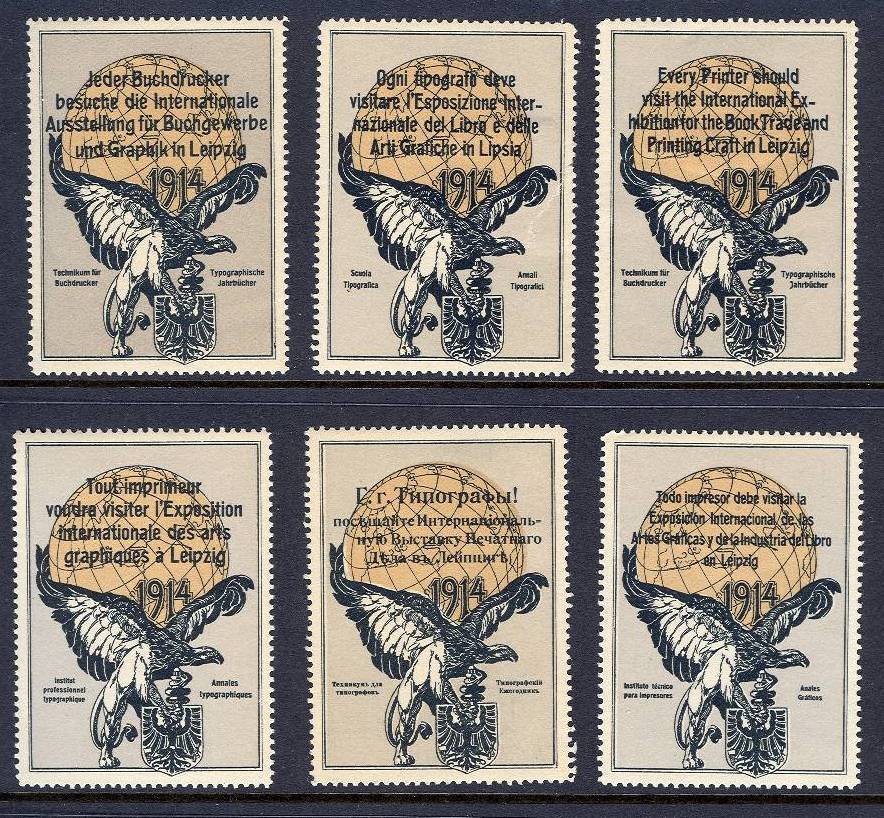
|
TYPOGRAPHER'S INSTITUTE
This very dramatic image features a gryphon again, and may be the work of Walter Tiemann, who designed most of the primary advertising and imagery for the expo, and was an expert typographer. As far as I know, these are all the languages - French, English, German, Russian, Italian, and Spanish. |
|

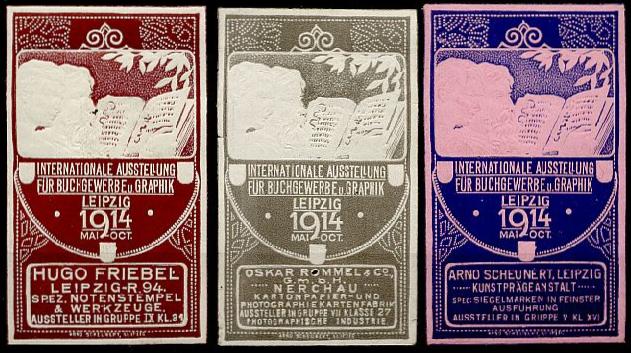
|
DEALERS
Individual participants on the show - dealers, printing companies, etc. - issued their own poster stamps as well. |
|

|
Saxonian dialect stamp
As near as I can figure out, this is an ad for a Leipzig book dealer. The text is in the local dialect, Saxonian, and says something like "While you are in Leipzig for the Book Trade Exhibition, be sure to buy our guide to the show!" |
|
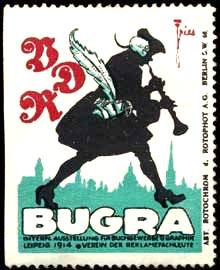
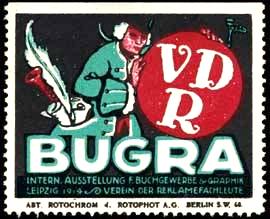
|
VEREIN DER REKLAMEFACHLEUTE
The Association of Advertising Professions (VDR) issued these two stamps. |
|
|
|
||
All text and images are the property of the author. Any errors are his.
If you have better or additional information about anything shown or discussed here, please email the author.
Home
Send feedback to the author: CLICK HERE
Created -- 07/11/2010
Revised -- 07/11/2013